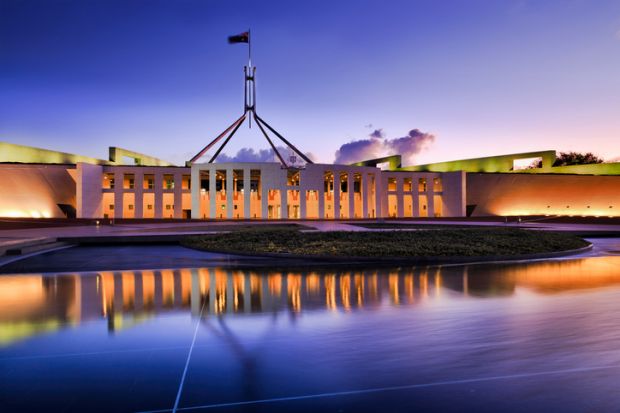Canberra has boosted income support for disadvantaged tertiary students by A$20 (£11) a week and boosted their rent assistance payments by up to 15 per cent, as part of a modest effort to help tackle the cost-of-living pressures afflicting millions of Australians.
In its second budget, the Labor administration has also committed A$188 million to boost clinical training capacity for psychologists, nurses, midwives and doctors. It has earmarked another A$127 million for 4,000 extra undergraduate places, aimed at developing a skills base for the country’s promised nuclear-powered submarines.
Universities are also expected to benefit from billions of dollars ploughed into the development of industries including hydrogen power, quantum computing, artificial intelligence and renewable energy storage.
The representative group for universities highlighted the bright spots in a 9 May budget that had never been expected to offer much to a university sector undergoing review. “We’re certainly pleased with what we see in this budget, because we’re halfway through the accord process,” said Universities Australia (UA) chief executive Catriona Jackson.
She said the government had delivered on several UA requests, such as expanding clinical placements and including students in any boost to welfare payments: “They’ve taken a genuinely mature approach to that really difficult balance between cost-of-living and fiscal repair.”
Federal treasurer Jim Chalmers said Australia was experiencing “one of the biggest turnarounds on record” as tax revenue surged on the back of jobs and wage growth and soaring mining profits. He said the country would record its first surplus in 15 years, with slim deficits to follow.
But most of the unexpected windfall is being funnelled into health, defence, aged and disability care reforms. With the Universities Accord not due to issue its interim report until June and its final report in December, the sector had not anticipated a budget night spending splurge.
The Australian Technology Network (ATN) said it was a “considered” budget that targeted urgent areas of need. “This is a crucial down payment on building a fairer go and providing the ability for people to participate in our economy,” said ATN chair Harlene Hayne.
“It boosts income support for students, provides additional university places and breaks down barriers for anyone wanting to get a university education.”
The income support increase applies to three key tertiary student welfare schemes as well as other benefits. Professor Hayne also highlighted an extra A$18 million commitment towards a programme that funds universities to buy equipment and modify their teaching for students with disabilities.
But the Independent Tertiary Education Council Australia (ITECA) said more could have been done to support students with non-government higher education providers. Independent Higher Education Australia (IHEA) said it hoped the next budget would address the “inequitable” access of non-government college students to tuition student loans, teaching subsidies and research grants.
Australian Academy of Technological Sciences and Engineering (ATSE) chief executive Kylie Walker said she hoped next year’s budget would include “a commitment to lifting research funding to international competitive levels”.
The Australian Academy of Science (AAS) said the “business-as-usual” budget had not shifted Australia’s “lamentable” investment in research and development.
“Reversing the downward trend of government investment in R&D is not the work of any single budget,” said academy president Chennupati Jagadish. “It will take a decade or more of commitment and effort from government, industry and the higher education sector.”




